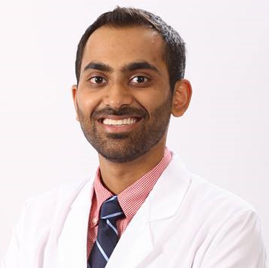What is platelet-rich plasma?
The blood supply that circulates throughout the body is comprised of a number of small components. Plasma is a liquid composition that accounts for the majority of the blood supply with red blood cells, white blood cells, and platelets constituting the remainder of the blood supply. Platelets are fragments of large bone marrow cells that contain numerous proteins, or growth factors, responsible for repairing injuries and, together with coagulation factors, play an important role in blood clot initiation.
Platelet-rich plasma (PRP) is the liquid portion of the blood supply with an increased concentration of platelets and growth factors. The concentration of this platelet-rich plasma can be upwards of 5 to 10 times greater than the naturally occurring concentration found in the body. This natural biologic treatment is intended to diminish pain and inflammation and create an environment favorable for healing. Current research on the effectiveness of platelet-rich plasma has shown this biologic treatment to be a promising cost-effective alternative to surgery in the correct patient and condition treatment.
How does platelet-rich plasma work?
Platelets react to a break in the blood vessel wall by clumping together to form a plug. This blood clot initiation, known as primary hemostasis, launches a series of actions through coagulation factors to assemble new tissue and bring blood flow to the injury site. Although the exact mechanism of how platelet-rich plasma operates is not yet known, research has found that platelet-rich plasma can accelerate the healing process by activating the patient’s own immune system as well as providing the necessary components for building new tissue. Dr. Ronak Mukesh Patel, orthopedic joint preservation doctor, treats patients in Sugar Land, Pearland, and the Houston, Texas area, who have experienced an injury or condition that can be treated with platelet-rich plasma.
How is the platelet-rich plasma treatment prepared?
Everything is done in one clinic visit in the office. This whole process takes approximately 1 hour from start to finish. Drawing blood from the patient is the first step in preparing platelet-rich plasma. As the different blood components vary in density, the blood sample is placed into a centrifuge that separates the platelets through a rapid spinning process which takes approximately 30 minutes. This platelet concentration is then added back into the plasma and subsequently injected directly into the injury site or joint by Dr. Patel. We often use an ultrasound to deliver the PRP accurately.

Is treatment with platelet-rich plasma effective?
Although the future of platelet-rich plasma as a cost-effective alternative for sports injuries is encouraging, laboratory studies are still being performed to evaluate the effectiveness of this biologic treatment. There is a considerable amount of literature documenting the significant reduction in mild to moderate osteoarthritis symptoms when treated with platelet-rich plasma and current scientific research has found the outcomes of certain tendon conditions are also improved when treated with platelet-rich plasma. The following are factors are evaluated to determine the efficacy of platelet-rich plasma therapy:
- The patient’s overall health (i.e., age, activity level, and medical history)
- The injury site location
- Acute injury vs chronic injury
- The cellular composition of the platelet-rich plasma preparation
What conditions can be treated with platelet-rich plasma?
Platelet-rich plasma therapy is typically reserved for patients who have failed prior treatment measures and do not prefer or are not candidates for surgical treatment. This biologic treatment has been shown to be beneficial for a number of conditions. The conditions with the most studies and effective results include:
- Tennis elbow (lateral epicondylitis)
- Mild osteoarthritis of the knee
- Trochanteric bursitis
- Patellar tendinitis
- Pain after ACL reconstruction
- Plantar fasciitis
The following are some of the other conditions that are treated with PRP:
- Muscle strains and sprains
- Osteoarthritis
- Chronic pain conditions
- Chronic tendon injuries
- Pain in various joints
- Joint injuries, specifically the shoulder, elbow, knee, hip and ankle
How can I prepare for a platelet-rich plasma injection?
- Patients are restricted from taking non-steroidal anti-inflammatories (NSAIDs) such as Advil (ibuprofen), Motrin, Aleve (naproxen), Naprosyn, Celebrex (celecoxib), Mobic (Meloxicam, Diclofenac, etc. 1 week before and 2 weeks after the PRP injection. These medications reduce the function of platelets and can diminish the effect of the injection. Tylenol (acetaminophen) can be taken safely.
- Physical therapy or a rehabilitation program will be recommended to start 1-2 weeks after the injection. There can be pain from the injection so a period of rest is advised for this reason.
What are the side-effects or disadvantages of platelet-rich plasma injections compared to steroid injections?
- Side-effects are rare but can include pain & swelling (short-term) and infection.
- These are also side-effects of steroid injections
- Compared to steroid injections, there is minimal to no degradation effect on cartilage or tendon tissue and PRP is a biologic fluid taken from your own blood.
- The main disadvantage of PRP injections is that they are not covered currently by insurance companies. The cost can be discussed with our office.
How many platelet-rich plasma injections do I need?
- The goal is to perform a single injection to resolve the injury or pain.
- Repeat injections will be determined based on several factors that can be discussed with Dr. Patel
Research for the use of PRP is promising and of high scientific importance. The equipment used to make PRP is approved by the Food and Drug Administration (FDA), but the procedure and injections used for orthopedic conditions is not officially approved. PRP is derived from the patient’s own blood, so it is not considered a drug. It is able to be widely used by physicians who are informed and educated about the therapy, base its use on scientific studies and evidence, and monitor the patient’s recovery and safety.
Platelet-Rich Plasma (PRP) Specialist

Platelet-rich plasma (PRP) is found in whole blood that is processed to increase the concentration of platelets in a small volume of plasma. PRP is used for therapeutic injections and has been shown to use the body’s own resources to promote growth and repair musculoskeletal tissues. PRP specialist, Doctor Ronak Mukesh Patel, provides platelet-rich plasma, as well as other biologic options for patients in Houston, Sugar Land, and Pearland, TX who qualify and would benefit from PRP injections. Contact Dr. Patel’s team today!








